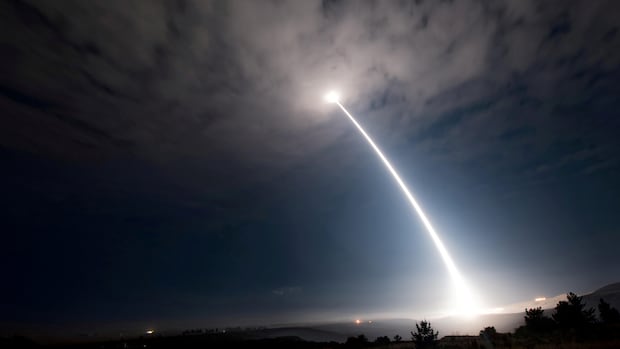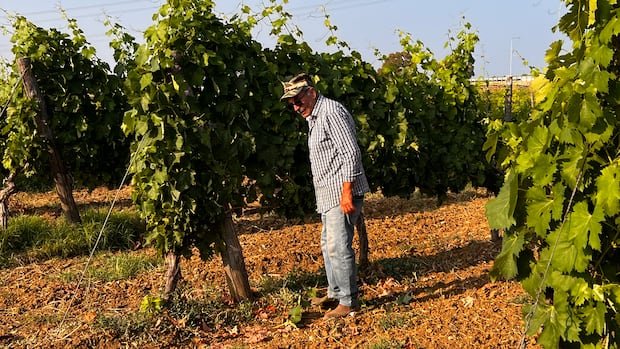A recent project by Carleton University graduate students used drones to search for magnetic signals linked to unexploded bombs in the Mer Bleue Bog, which was used as a practice bombing range in the Second World War.
Graduate students Pablo Arzate and Sareh Mirbagheri used magnetometers mounted on drones to survey part of the bog — a 3,500-hectare conservation area in Ottawa’s east end that’s owned and operated by the National Capital Commission (NCC).
The site consists primarily of peat bog and was actively used as a bombing range between 1942 and 1945.
While the Department of National Defence (DND) knows where the bombs were dropped, it doesn’t know how many there are.
But after surveying a small area with drones, the students’ team was able to count more than 17 unexploded ordnances (UXOs) in one specific zone.
Why the bomb disposal never happened
“It was really interesting for all of us to see that result [in] the just the small part that we were exploring,” Mirbagheri said.
“Our technology doesn’t say specifically, ‘Hey this is a bomb, this is an airplane,'” added Arzate. “But it tells us, ‘Hey there’s something down here.’ And the story of this place and the story of the geology tell us the whole interpretation — which is this place is filled with bombs, exploded or unexploded.”
A DND spokesperson told CBC News that while it was not involved in the project, it welcomes innovation in the unexploded bomb removal field.
In 1960, a bomb disposal team was tasked with clearing the range.
But due to the nature of the terrain, that never happened, and the bog was never declared free of explosives. Ownership of the land was transferred to the NCC in 1965.
DND said the types of munitions dropped included aerial bombs weighing up to about 450 kilograms.
‘A pretty honourable cause’
For the project, Arzate said the team flew drones over the survey area five hours a day over the course of four days.
Because of the bog’s traits, any non-organic objects in the terrain would stand out to the detectors they used, he said.
“The bog itself is very different from everything else. It’s made of pure organic matter,” he said. “That makes it easy for us when we’re trying to detect abnormalities that are not composed of organic material.”
Using drones was particularly valuable, Arzate said, because they could survey the terrain without disturbing the site, demonstrating that the work can be done without needing heavy equipment.
“I think we’re really proud of where we’re at and what we’ve achieved, especially because … there’s no big company giving us money,” he said.
Technology has potential for wider use
Arzate said he intended to use the project’s aerial surveying technology for mining and resource extraction, but wanted to demonstrate that it could be applied widely, including for defence and land remediation purposes.
“We’re having to use this technology to clear the the minefield and the bombs that have been there or are being placed as we speak, and we thought that this is a pretty honourable cause to join,” he said.
According to DND spokesperson Andrée-Anne Poulin, the UXO risk is low since there is little to no human contact with the parts of the bog where the explosives are located.
Because of that, there are no plans to remove unexploded bombs unless the land is redeveloped.
“As long as the area is maintained as parkland, the risk will remain low,” Poulin said in an email.







